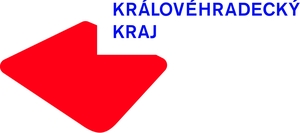1. Referees, contestants and their coaches must wear the official uniform as herein defined.
2. The referee committee may ban any official or competitor who does not comply with this regulation from the competition and the competition area.
3. Dress code for referees:
a. Referees and judges must wear the official uniform prescribed by the referee committee. This uniform must be worn at all tournaments and referee courses.
b. The official uniform consists of:
– A navy blue blazer
– A white shirt with short or long sleeves (to be decided and communicated by the organizing committee of the tournament)
– An official tie worn without tiepin
– Plain gray trousers without cuffs
– Female referees and judges may wear a hairclip
4. Dress code for contestants
a. Any athlete wearing a karate-gi made from thin see-through fabric or that includes mesh will not be allowed to compete. The only karate-gi markings that are permitted, aside from one’s personal name (which should be written vertically in the lower right-hand corner of the karate-gi jacket, above the manufacturer’s label), are a SKIF logo patch (either the Shotokan tiger mark or the vertically written Chinese characters) and a national flag on the left breast of the jacket. If there is a SKIF logo or the Chinese characters on the left breast of the jacket, the national flag may be worn on the left sleeve. Also, the label of the manufacturer must be on the right-hand side of the hemline of the karate-gi jacket. If the logo of the manufacturer appears anywhere else (chest, shoulder, upper back, etc.), it must be smaller than 5 cm square and covered using white fabric sewn on with thread (covering the logo with tape is not permitted). Any karate-gi with a logo or any type of embroidery larger than 5 cm square will not be allowed.
b. The identifying number issued by the organizing committee of the tournament must be worn on the back, attached to the karate-gi or preferably the belt.
c. For KO-HAKU matches, one contestant must wear a red belt with his / her own belt.
d. The jacket worn with a belt must have a minimum length so that it covers the hips, but covers no more than three-quarters from hip to knees. Female competitors may wear a plain white T-shirt beneath the karate-gi jacket.
e. The jacket sleeves must be no longer than to the bend of the wrist and no shorter than halfway down the forearm. Jacket sleeves may not be rolled up (inside nor outside).
f. The trousers must be long enough to cover at least two thirds of the shin and may not be rolled up (inside nor outside).
g. Contestants must keep their hair clean and cut to a length that does not hinder a smooth execution of the match. HACKIMAKI (headbands) are not allowed. Should the referee consider any contestant’s hair too long and / or unclean, the referee committee may ban the contestant from the match.
h. In kumite matches hair slides are prohibited, as are metal hairclips. In kata, the wearing of discreet hair clips is permitted.
i. Contestants must have short fingernails and not wear any jewelry (watches, hair accessories, rings, bracelets, necklaces, etc.)
j. The wearing of metallic (teeth) braces is allowed. However, in kumite matches the contestant must be able to wear the gum shield over the braces. The contestant accepts full responsibility for any injury.
k. In kumite, the following protective equipment is compulsory: white mitts (gloves) and a white or transparent gum shield. Groin protectors are allowed, but not compulsory. Shin protectors are forbidden. Female competitors may in addition wear a chest protector under the karate-gi. All protective equipment must be approved by SKIF.
l. Wearing glasses is forbidden in kumite. Soft contact lenses can be worn at the contestant’s own risk.
m. Female athletes who must cover their hair for religious reasons will be permitted to use a black headscarf. Athletes will not be allowed to wear a turban or headband during competition. For athletes that intend to wear a headscarf during competition, approval must be received in advance from the referee committee during the referee meeting.
n. The referee, taking into consideration the advice of the official doctor, must approve the use of bandages, padding or supports that have to be worn due to injury. However, competitors must be unharmed in the first round (no bandages).
o. If a contestant enters the competition area inappropriately dressed, he or she will not be disqualified immediately, but will be given one minute to remedy the issue.
5. Dress code for coaches:
a. Coaches must wear the official track suit of their country (jacket and pants).
b. Short pants are not allowed.




